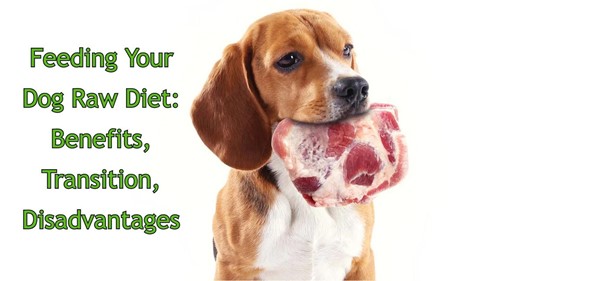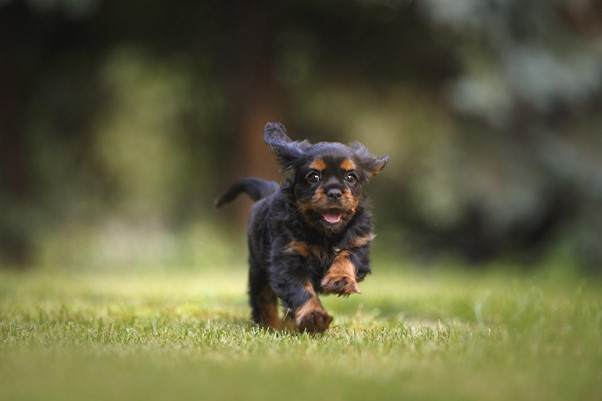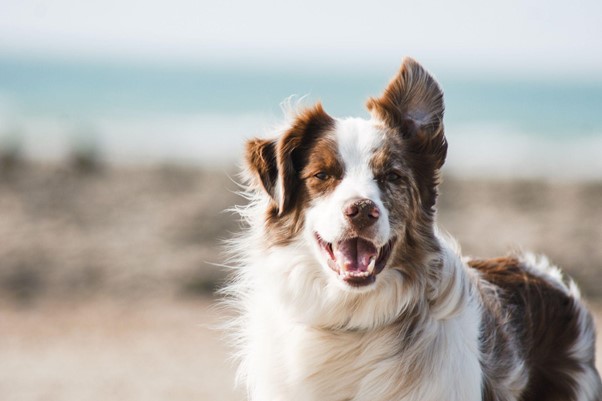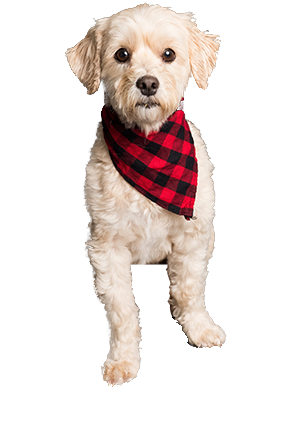The Importance of Proper Hydration for Dogs
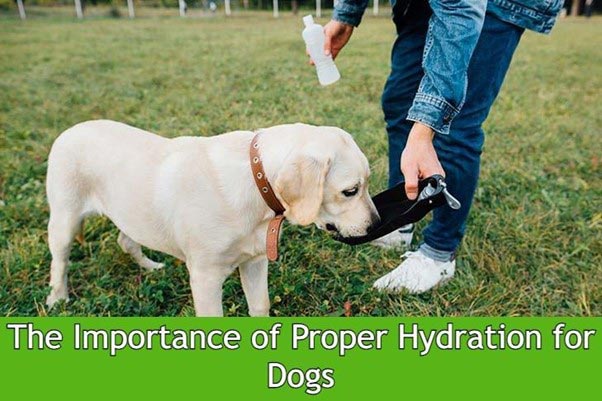
Water is essential for sustaining life, and this holds true in the animal kingdom as well. Dogs need to stay properly hydrated just like humans do in order to remain healthy and active.
Lack of proper hydration can lead to health problems such as dehydration, heat stroke, kidney failure, and even death.
Proper hydration is an essential part of keeping your dog healthy and happy.
In this blog post, we’ll discuss the importance of proper hydration for dogs and answer all of your questions about keeping your pup properly hydrated.
What is Proper Canine Hydration?
Proper hydration means ensuring that your dog has access to plenty of fresh, clean water throughout the day. Dogs should drink between 1/2 and 1 ounce of water per pound of body weight each day, depending on their activity level and environment.
If your dog lives in a hot climate, he may need more water than usual to make up for the extra perspiration and panting that occur when it’s warm.
How Much Water Does a Dog Need?
How much water a dog needs depends largely on the size, breed, and activity level of the individual dog in question.
Generally speaking, small breeds need around one ounce of water per pound of body weight per day while larger breeds need around two ounces per pound of body weight per day.
It’s always important to make sure that fresh drinking water is readily available throughout the day so that your pup can stay hydrated.
What Kinds of Water Should Dogs Drink?
When it comes to types of water that are safe for your pup to drink, tap or filtered tap water is best. Tap or filtered tap water is free from impurities like chlorine and fluoride which can be harmful to your dog’s health.
If you do opt for bottled or spring water, make sure that it doesn’t contain any additional minerals or additives as these can also be harmful to your pup’s health.
If you have any questions about what type of water you should give your dog, talk with a veterinarian who can provide more specific advice based on your individual pet’s needs.
Signs That Your Dog Is Not Getting Enough Water
#1: Dry Nose and/or Mouth
A dry nose or mouth is a surefire sign that your pup needs more water in its diet. If you notice that your pup’s nose or mouth feels dry when touched, offer them a bowl of fresh water right away and keep an eye out for other signs of dehydration.
#2: Loss of Appetite
If your pup suddenly has no appetite, it may be because they’re dehydrated. Dogs who don’t get enough fluids in their system can often become lethargic and uninterested in food.
Make sure you provide plenty of clean, cool water for your pup throughout the day so they don’t miss out on meals due to dehydration.
#3: Excessive Panting
If you notice that your dog is panting excessively even when it isn’t hot outside or after exercise, then this could be an indication that they aren’t getting enough water in their system.
Again, make sure there is always fresh water available and check that they are drinking regularly each day if you suspect they are dehydrated.
#4: Loss of Skin Elasticity
Dehydration can also cause the skin around your pup’s neck or back to become less elastic than usual—it will feel tight rather than bouncy when pressed down gently with two fingers.
If you notice this change in elasticity, give your pup some extra fluids right away!
#5: Lethargy/Lack Of Energy
Your dog should have plenty of energy each day – if they’re seeming sluggish or lacking energy out of nowhere, then this could be a sign that they’re dehydrated and need more fluids in their diet ASAP!

Make sure there is always clean, cool water available for them throughout the day, and keep an eye on other signs as well (like loss of appetite).
If you notice any of these signs in addition to other concerning symptoms such as fever or vomiting then it’s important to contact a veterinarian right away since these could be signs of something more serious than just dehydration.
The Benefits of Proper Hydration for Dogs
Proper hydration is an essential part of keeping your dog healthy and happy. Here are some of the amazing benefits of proper hydration for your pup.
Helps Keep Muscles and Joints Healthy
When dogs are properly hydrated, their muscles and joints remain flexible and well-lubricated. This helps them to move more easily and with less pain or discomfort.
Proper hydration also helps ensure that they don’t become overly fatigued when walking or playing outside.
Dogs who don’t get enough water might experience soreness, stiffness, or tightness in their muscles and joints which can lead to more serious health issues if left unchecked.
Improves Digestion
Proper hydration is essential for the digestive process because it helps the body break down food more easily. It also prevents constipation by keeping stools soft and making them easier to pass through the intestine without causing strain or discomfort.
When your dog is dehydrated, their digestive system won’t work as efficiently which could cause discomfort or even lead to serious health issues such as colitis or bloat.
Aids in Detoxification Processes
Hydrating regularly helps flush toxins from your pup’s body naturally by allowing those toxins to be released through urine instead of being reabsorbed into the bloodstream where they can do harm over time.
Proper hydration also helps keep your pup cool during times of high heat and humidity by aiding in evaporative cooling processes through panting, sweating, etc., which allows their body temperature to remain steady despite environmental conditions.
Helps Keep Skin Healthy
When a pup is properly hydrated, it helps keep its skin moist and supple which makes it easier for them to maintain a healthy coat free of tangles and knots that can cause irritation when brushed or combed out improperly due to dryness caused by dehydration-induced skin problems (i.e., flaking, dandruff).
Hydrated skin also means fewer wrinkles and sagging which will help your pup look younger and longer!
Benefits Mental Health
Just like humans, dogs require adequate hydration levels in order to maintain mental sharpness because dehydration can cause mental “fuzziness” due to a lack of energy transfer within cells throughout the brain (which needs ample amounts of water).
Additionally, proper hydration helps reduce stress levels since dehydration often causes physical fatigue which leads to emotional exhaustion over time if not addressed quickly enough before it becomes severe enough to affect performance on a daily basis (i.e., lethargy).
How to Keep Your Dog Well-Hydrated
Dogs need plenty of water to stay healthy and active, so it’s essential that they get enough. But how exactly do you make sure your furry friend stays hydrated? Check out our list of some ways to keep your pup well-hydrated!
Offer Plenty of Water
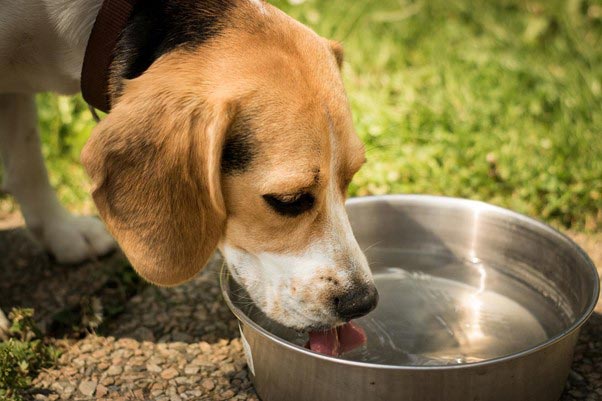
The simplest way to ensure your pet has enough water is to make sure they have access to a bowl at all times. Be sure to check their water bowl regularly throughout the day and refill it whenever it gets low.
Add Variety
If you find that your pup isn’t drinking much from their bowl, try adding some variety by giving them ice cubes or frozen treats like broth or yogurt. This will help make drinking more fun for them and encourage them to drink more often.
Increase Humidity
If you live in a dry climate, consider investing in a humidifier for your house. This extra moisture in the air will help keep your pup hydrated, especially during the hot summer months when dehydration can be an issue.
Give Them Fresh Water
Make sure that the water in their bowl is always fresh by replacing it with new water at least once a day. Old, stagnant water can become unappealing and potentially dangerous if bacteria start growing in it.
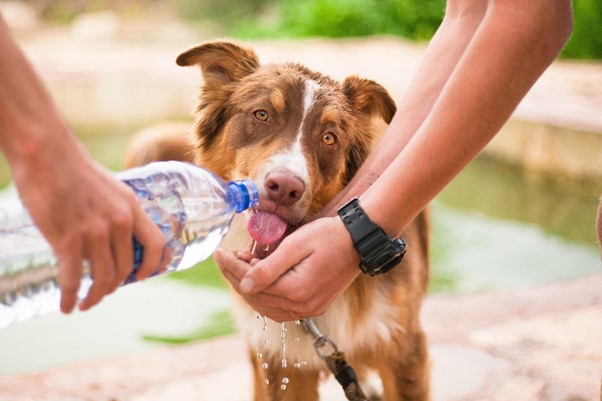
Add Flavor
To make drinking more appealing, try adding some flavor to their water by mixing it with tuna juice or chicken broth. Just be sure not to overdo it — too much flavor could lead to an upset stomach!
Take Breaks on Long Walks
On hot days, take regular breaks while out on walks with your pup so they have time to cool down and drink from puddles or streams if available. This will help keep them from becoming dehydrated due to overexertion or heat exposure.
Monitor Activity Levels
Pay attention to how active your dog is and make adjustments accordingly — less active dogs may need more frequent breaks for rehydration than more active ones to do!
Use Wet Food
Supplementing dry food with wet food options can also help ensure that your pet gets enough fluids throughout the day — just be sure not to overdo it as wet food can cause digestive issues in some cases.
Use Treats Wisely
Treats are great for reinforcing good behavior but should only be given sparingly as they’re usually high in sugar which can actually pull moisture away from the body if consumed too often!
Visit the Vet Regularly
Last but not least, remember that any changes in behavior (such as lethargy or loss of appetite) could indicate an underlying health issue — so don’t hesitate to take your pup to the vet if something doesn’t seem right.
Learn more by clicking the link below.
Conclusion
Proper hydration is essential for the health and well-being of our canine companions; not only does it keep them feeling their best but it helps support their overall physical health too!
By making sure they have access to clean fresh drinking at all times and monitoring them closely for any signs that something may be amiss you can help ensure they stay healthy and happy every day!
As always if you have any questions about how much water a dog needs or what types are safe then consult with a vet who can provide more specific advice tailored towards the individual needs of each pet!
The Importance of Proper Hydration for Dogs Read More »
